- AUDIO ONE-TO-ONE Call Now: 210-805-9927
- Contact
- Register
- My Account
RECORD CLAMPS AND WEIGHTS
The Problem -
During the process of playing a record, minute vibrations are created in the vinyl as a result of the stylus tracing the groove. Left untreated, these vibrations can make their way back to the stylus, resulting in spurious output from the cartridge. The turntable platter and or mat are intended to damp the LP, reducing the errant vibrations. For the mat or platter to do their job, there must be intimate contact with the record. Compounding the problem is the fact that most records are not perfectly flat, making good contact with the mat or platter even more difficult. The intent of a record clamp or weight is to tightly couple the record to the platter or mat so these vibrations are more effectively transferred therefore maximizing the damping offered by the platter and mat. On the surface then, it would seem like a clamp is a good idea, so let’s look at the options.
Solutions -
There are many options for optimizing contact between the record and the mat.
- A simple weight
- A simple weight with added vibration damping
- A friction clamp that grips the spindle
- Screw-down clamps
- Compound clamp that grasps the spindle
- External perimeter of ring weights
- Vacuum hold down
- A simple record weight can be effective and is surely the most obvious way to achieve the goal. We would assume the heavier weight the better, and that would be true if the turntable bearing could support the added weight and the motor has enough torque not be affected by the added load. Further, if your turntable employs a suspension, it may need to be re-tuned due to the added weight. Due to those considerations, record weights cannot be considered a universal option.
- A more advanced version of a record weight, is the LPI from Stillpoints. This device differs from a simple weight in that it uses active internal elements to absorb vibration. It employs the same patented design used in the other Stillpoints products to absorb and dissipate vibration both the from the record and spindle. Made from stainless steel, the LPI is also quite heavy (1 lb, 6 oz ), offering substantial clamping action in addition to damping vibration. This amount of mass, however, precludes it’s use on many turntables.
- Moving on to clamps we find a variety of options. There are a few designs that rely on friction to grip the spindle (the PIG clamp is an example of this design, though I'm not sure it is still available) and are usually made of rubber. These examples are not going to be able to provide much clamping force and thus may have little effect.
- Screw-down clamps require a threaded spindle. They can be quite effective and are generally considered as part of the initial turntable design and will usually be included with a model so constructed. VPI uses this system on a number of their turntables. One note of caution regarding screw-down clamps is that they are capable of exerting a tremendous amount of force, so don't overdo it.
- Some clamp designs employ an active collet mechanism that secures the clamp to the spindle. Turning a knob on top of the clamp tightens the collet around the spindle to firmly lock it in place. Apply a bit of downward pressure is applied to mate the record to the platter or mat and a twist the knob maintains that force. The clamp from Michell is a good example of a product employing this design. A more advanced mechanism can be seen in the reflex clamp. Here the mechanism both grabs the spindle while simultaneously pulling itself downward against the LP, applying some clamping pressure on its own. The advantage here is that less force is required by the user to establish adequate pressure. This may be an advantage on turntable with a sprung suspension that limits the amount of downward force that can be applied to the platter. The best example of this design is the Basis Reflex Clamp.
- Heavy perimeter ring weights can also be effective, especially with regards to flattening records with edge-warp. VPI and Clearaudio make such products. The drawback is the cost and the extra steps involved with placing and removing the heavy ring (usually machined from stainless steel) for each play.
- Taking the concept of clamping to its ultimate conclusion is vacuum clamping. Here the record is tightly coupled to the platter by means of a constant low-pressure vacuum maintained beneath the LP. Without question, this is the most effective way of insuring a tight bond between the LP and mat or platter. It also has the significant advantage of applying equal force over the entire record, whereas a clamp can only apply force at the label area. The drawback is expense and complexity. Obviously, the turntable must be designed with vacuum clamping which involves a special platter and bearing with an air pathway and a special platter mat employing a a resilient edge lip to preserve an air seal with the LP. Further, the external vacuum pump and necessary plumbing need to be considered along with the potential noise that some systems generate.
To clamp or not to clamp -
Some turntable manufacturers have designed their products to be used without clamps, or they believe that clamps are either unnecessary or detrimental to performance. Rega and Linn are two that come to mind with this philosophy. That said, I’ve spoken with a number of listeners who feel that a good clamp improves the performance of these ‘tables.
Summation -
In the majority of cases, our findings (and overwhelming feedback from our customers) suggest clamps do indeed offer significant performance advantages on most every ‘table.
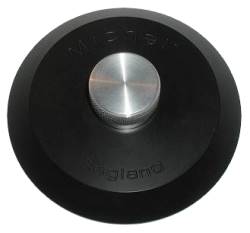
Michell Record Clamp
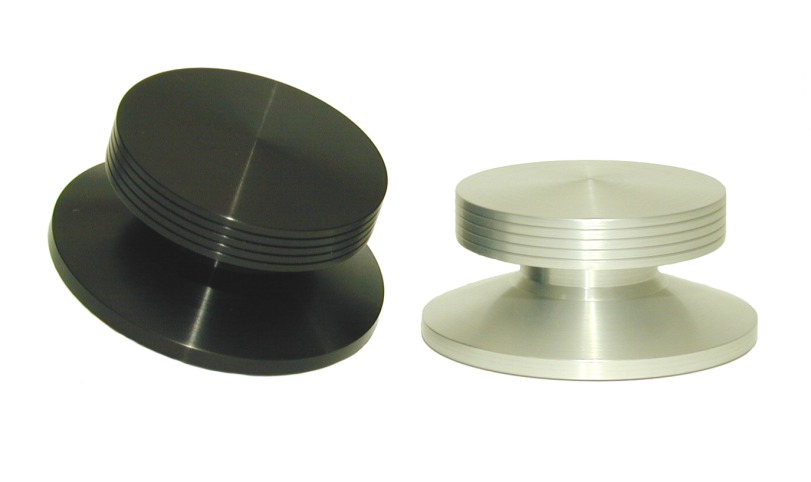
Basis Reflex Clamps
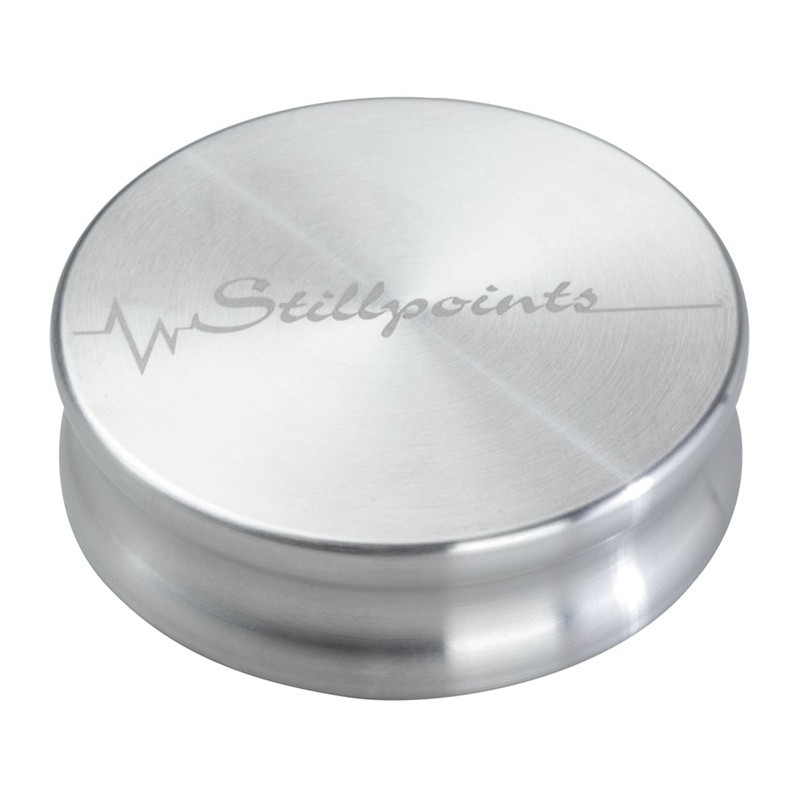 Stllpoints LPI
Stllpoints LPI
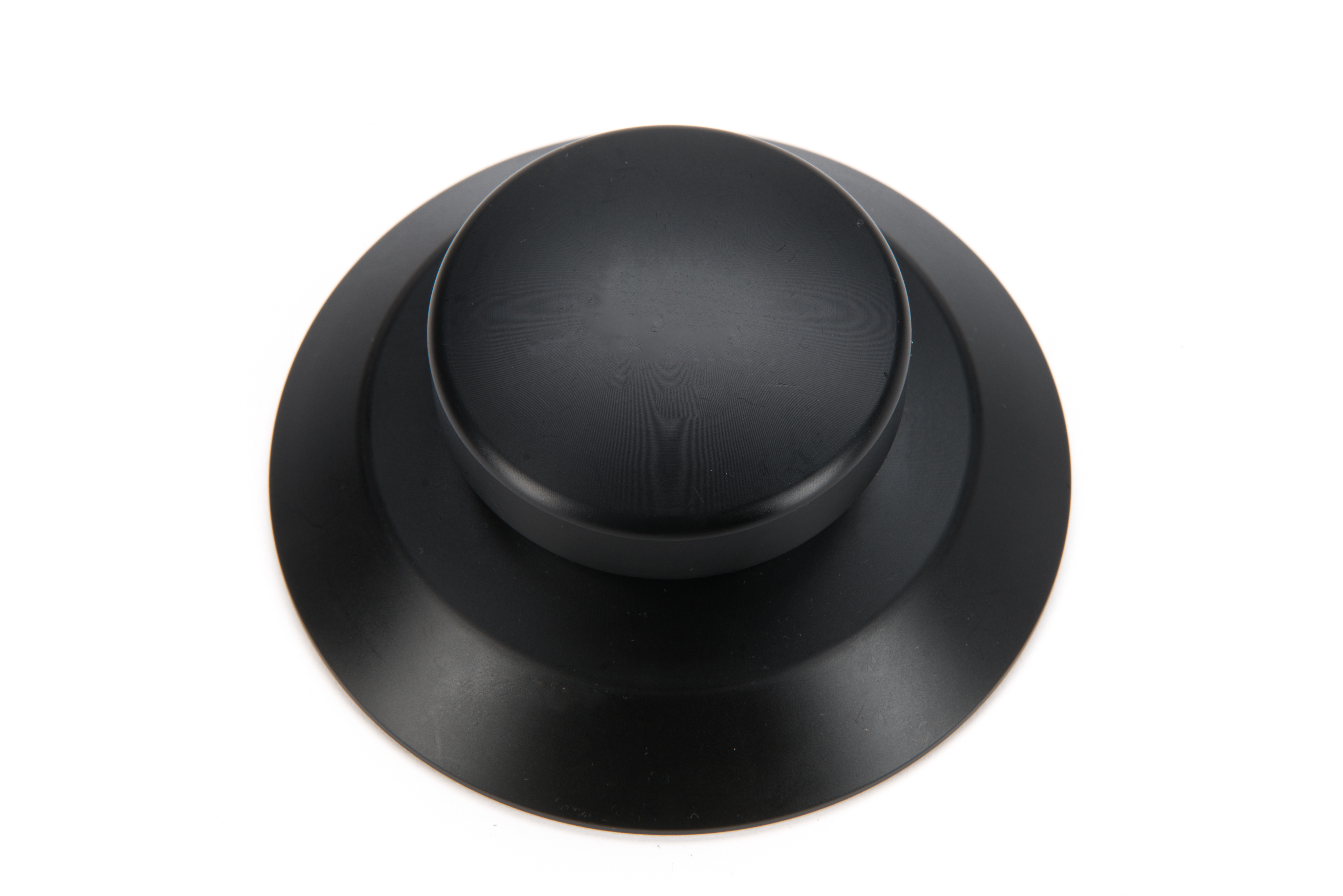
VPI Delrin Screw-Down Clamp
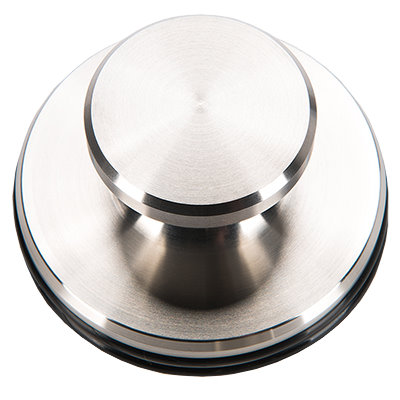
VPI Stainless Steel Record Weight
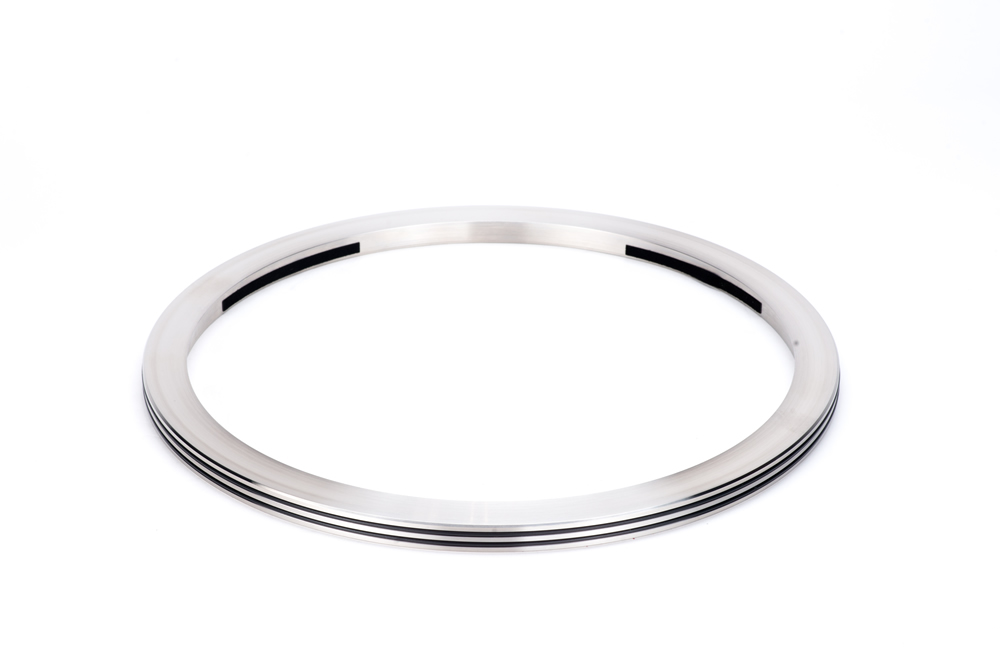
VPI Stainless Steel Ring Clamp

